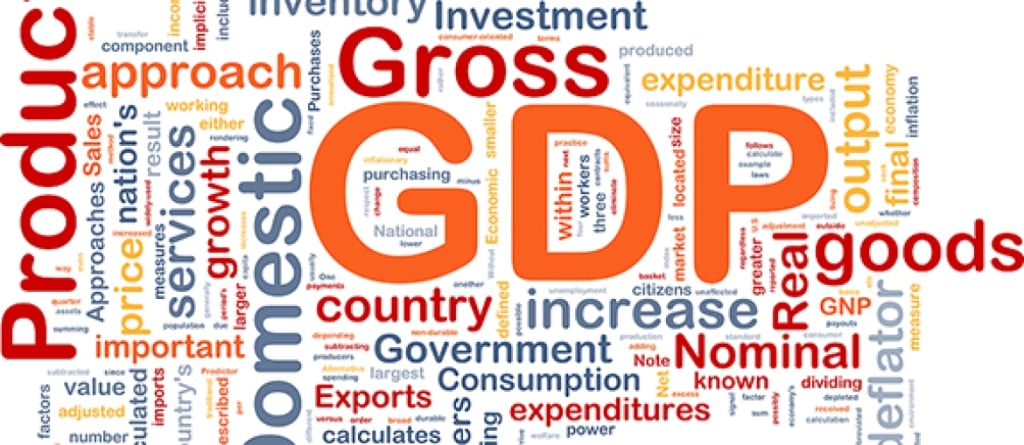Demystifying Economic Indicators: A Closer Look at GDP Components
GDP

Economic indicators serve as crucial barometers, offering insights into the health and performance of a nation's economy. Among these, Gross Domestic Product (GDP) stands as a cornerstone, providing a comprehensive measure of a country's economic activity. However, behind the seemingly straightforward GDP figure lie various components that paint a nuanced picture of economic health. In this exploration, we will demystify economic indicators, taking a closer look at the components that contribute to the calculation of GDP.
What is GDP?
GDP, or Gross Domestic Product, is a key economic indicator that quantifies the total value of all goods and services produced within a country's borders over a specific period. It serves as a comprehensive measure of a nation's economic output and is often used to gauge economic performance, growth, and standard of living.
The Components of GDP
To understand GDP comprehensively, it is essential to dissect its components. GDP is generally calculated using three primary approaches: the production approach (GDP = Gross Value Added + Taxes on Production - Subsidies), the income approach (GDP = Compensation of Employees + Gross Profits + Taxes on Production - Subsidies), and the expenditure approach (GDP = Consumption + Investment + Government Spending + (Exports - Imports)). Each approach provides a unique perspective on economic activity.
1. Consumption (C)
Consumption represents the total expenditure on goods and services by households. This includes spending on durable goods (cars, appliances), non-durable goods (food, clothing), and services (healthcare, education). High levels of consumption are often associated with a robust economy, reflecting consumer confidence and financial stability.
2. Investment (I)
Investment, in the context of GDP, does not refer to individual financial investments but rather to expenditures on capital goods. This includes business investments in machinery, equipment, and structures, as well as residential construction. Investment is a key driver of economic growth, indicating businesses' confidence in future demand and their commitment to expanding operations.
3. Government Spending (G)
Government spending encompasses all expenditures made by federal, state, and local governments. This includes salaries of government employees, public infrastructure projects, and government services. Government spending can play a significant role in stimulating economic activity, particularly during periods of economic downturn.
4. Net Exports (Exports - Imports)
Net exports represent the difference between a country's exports and imports. If a country exports more than it imports, it has a trade surplus, contributing positively to GDP. Conversely, a trade deficit occurs when imports exceed exports, exerting a negative influence on GDP. Net exports highlight a nation's competitiveness in the global market.
5. Changes in Inventories
Changes in inventories are not always explicitly mentioned but are crucial in the production approach of GDP calculation. They represent the difference between the value of goods produced and the value of goods sold. Positive changes indicate an increase in inventories, contributing to GDP, while negative changes suggest a decrease.
6. Gross Value Added (GVA)
Gross Value Added is the total value of goods and services produced by an industry, sector, or the entire economy minus the value of intermediate goods used in production. It provides a more granular view of economic output by examining the value-added at each stage of production.
Significance of GDP Components
Understanding the components of GDP is vital for policymakers, economists, and investors alike. Changes in these components can reveal insights into the underlying dynamics of economic activity, helping to shape monetary and fiscal policies, forecast future economic trends, and guide investment decisions.
For instance, a surge in consumer spending (Consumption) may indicate increased confidence in the economy, while a decline in business investments (Investment) might signal caution among businesses. Government spending (Government Spending) can be a tool used to stimulate economic growth during periods of recession, and the balance of exports and imports (Net Exports) reflects a country's competitiveness on the global stage.
Conclusion: Decoding Economic Health
Demystifying economic indicators, particularly the components of GDP, provides a clearer understanding of a nation's economic health. Each component plays a unique role in shaping the overall economic landscape, and fluctuations in these factors can indicate shifts in economic activity, both domestically and globally. As we navigate the complexities of economic indicators, a closer look at GDP components empowers us to decipher the intricate workings of economies and make informed decisions in an ever-changing financial landscape.





Comments
There are no comments for this story
Be the first to respond and start the conversation.